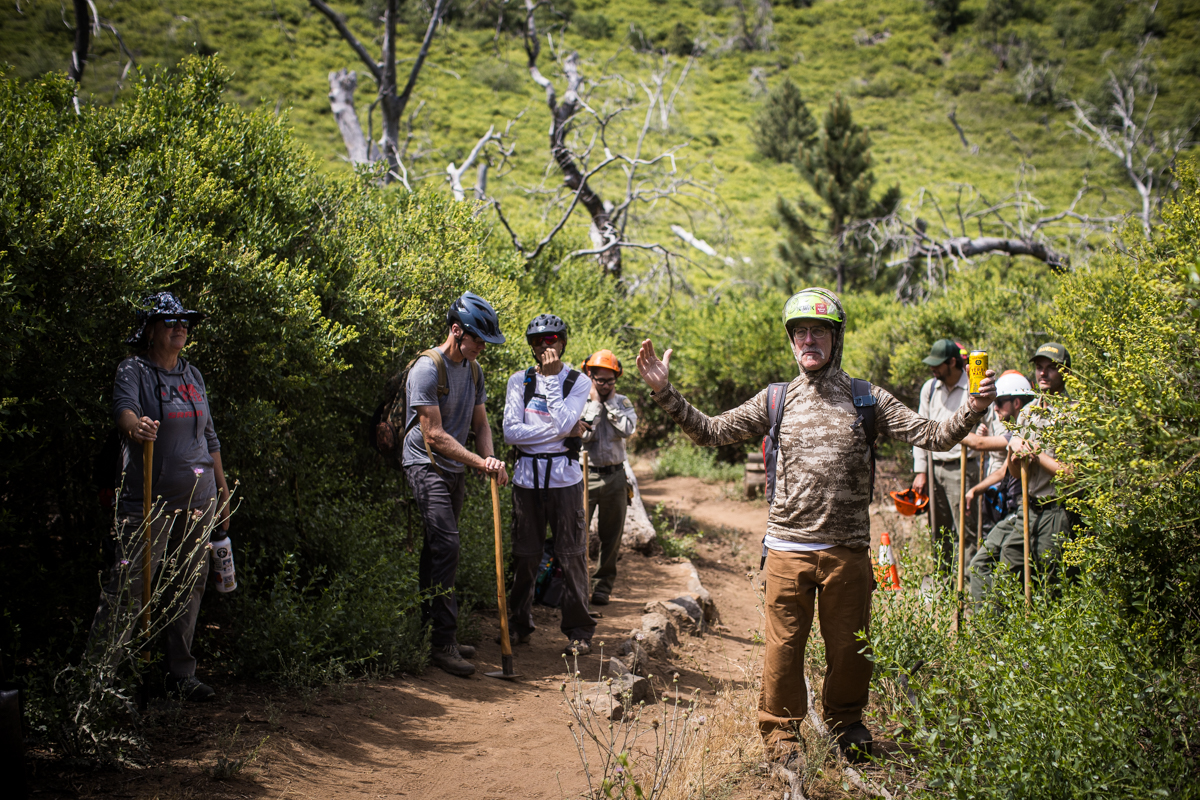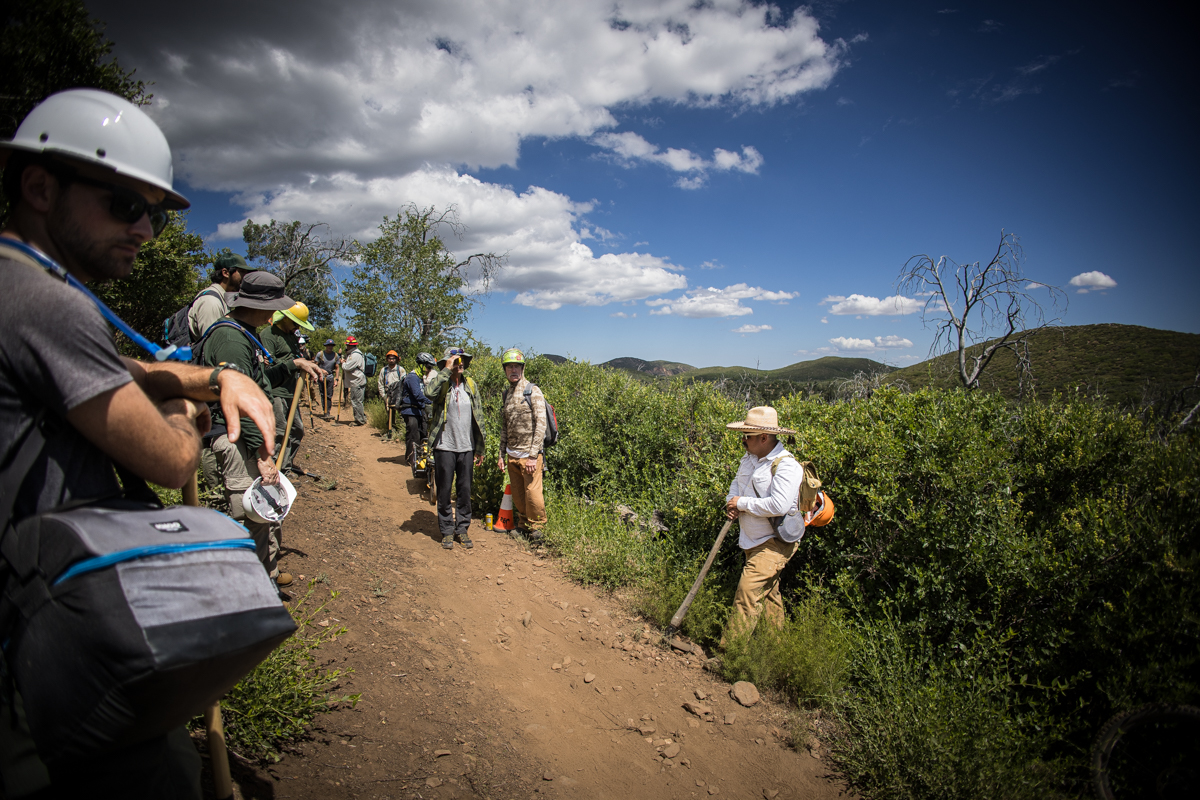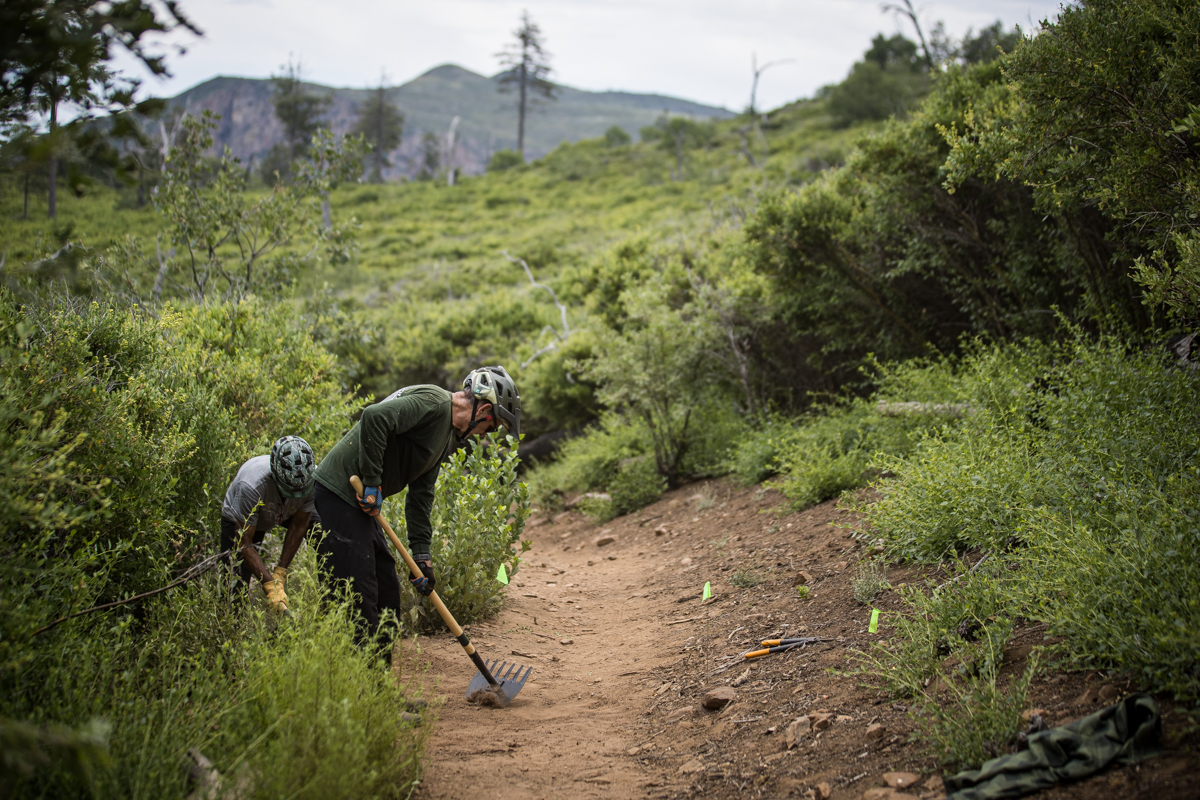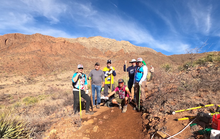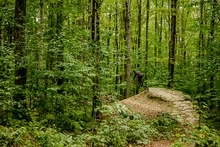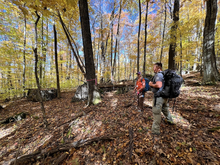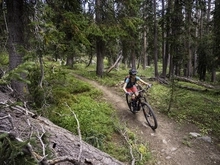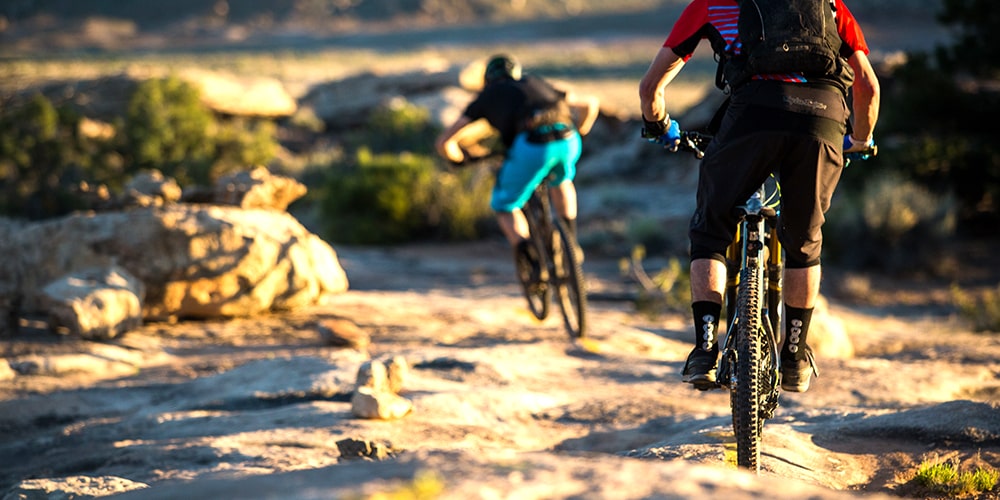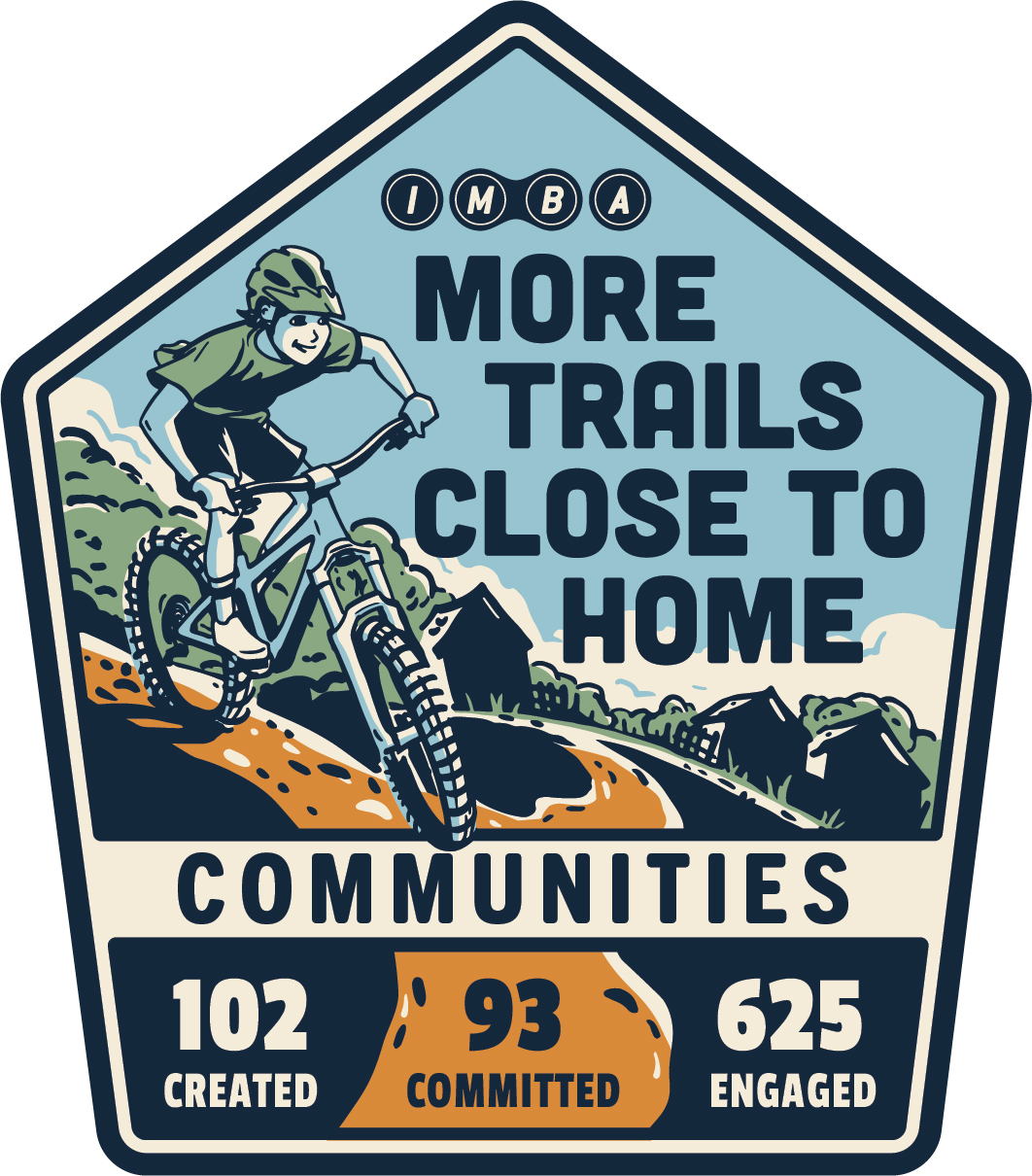Mountain Bikers Riding Bikes, Talking Trails #8
San Diego, the southernmost metropolitan area in California, is known for its numerous beaches, warm climate, and deep, active harbor. But, an hour due east and climbing nearly 6,000 feet plops outdoor recreationists into a dynamic environment punctuated by dense chaparral habitat and grassy meadows, packed with peaks that overlook the equally varied and starkly contrasting Anza-Borrego desert. It’s beautiful and a feast for the eyes.
Needed escape from metropolitan areas like San Diego is assumed—those who call these areas home crave open spaces to reflect, reconnect, and breathe. And with a population of 1.4 million people, that means these ecosystems, like the Cleveland National Forest that’s outside of San Diego, are experiencing major impacts from increased usage and our shifting climate.
For land managers like Anahí Peña, a U.S. Forest Service Backcountry Ranger for the Palomar Ranger District, Cleveland National Forest, navigating these trail challenges is no solitary feat. “There are a lot of people who love our trails and a lot of people come out to recreate,” she said, “but, the challenge is that our trails are being loved to death, and that's why we're here [for this training].”
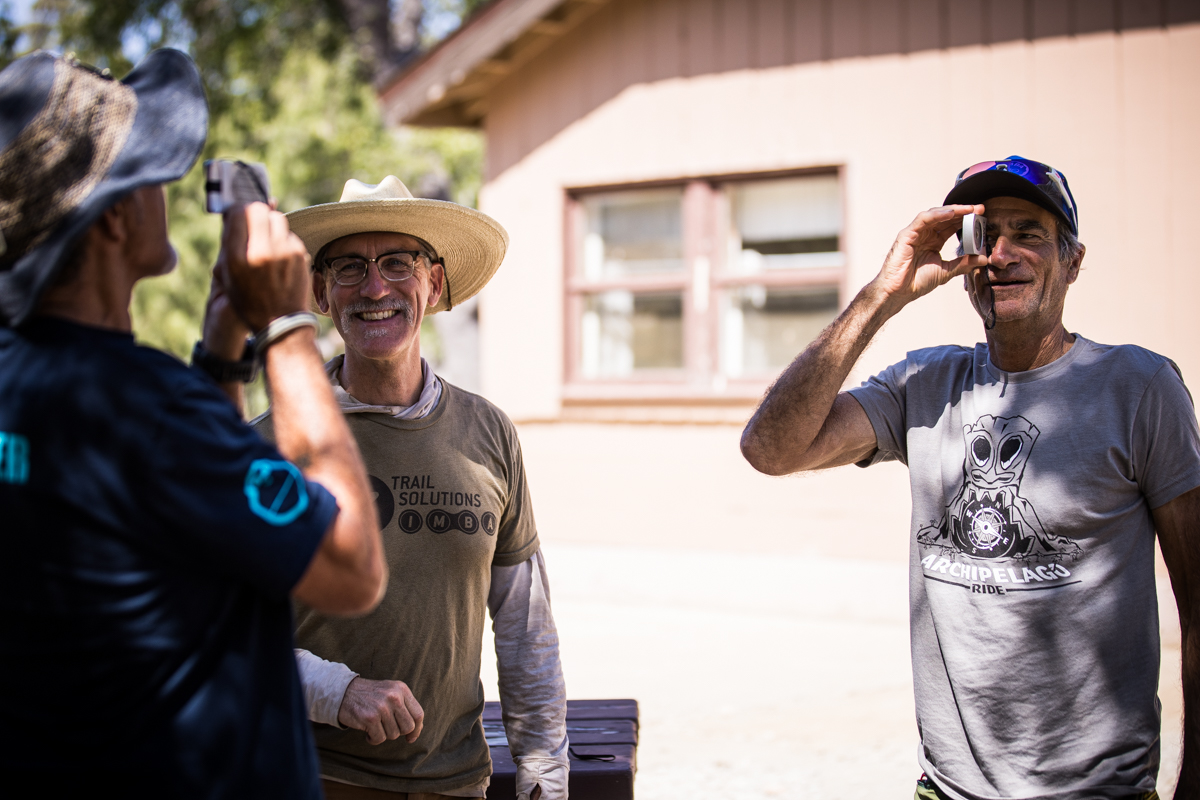
Consistently, from forest to forest, these impacts are affecting the viability of many legacy trails’ futures. “I want to make sure that we have quality user experience up here, but I also want to make sure that the environment and the landscape are supported. We’ve got to find that balance between users and the natural scape,” noted Mia Somenek, U.S. Forest Service Assistant Recreation and Lands Officer for the Descanso District, Cleveland National Forest.
Because most of these forests are massive swathes of land (the Cleveland is 460,000 acres alone), consistent trail maintenance practices are tough to implement in person on a regular basis. But thanks to the relationship between the San Diego Mountain Bike Association (SDMBA), the Cleveland Ranger District officers, and IMBA, this type of gathering for trail education is possible.
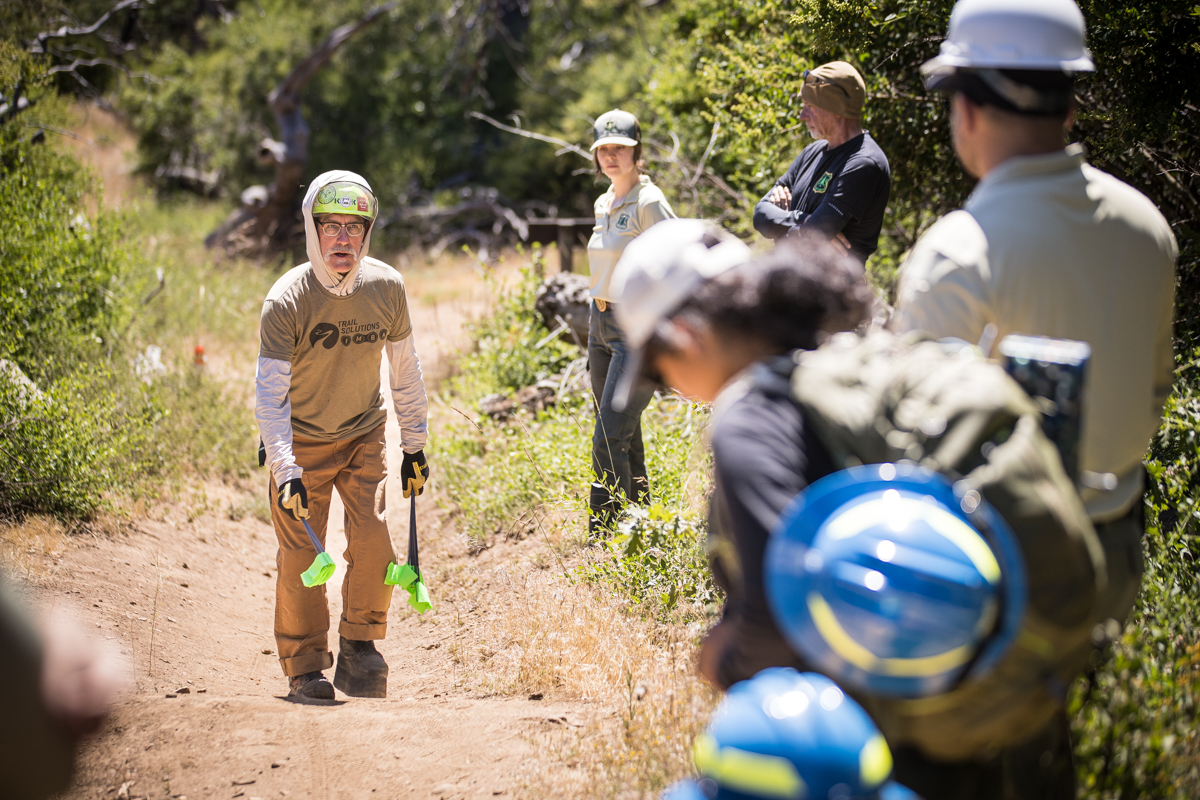
It was during the California Trails and Greenways conference over a year ago that SDMBA’s Executive Director, Susie Murphy, encouraged Mia to apply for the grant to fund the training. “The Forest Service had to apply. As a nonprofit, I couldn't. Mia had to, so I presented it to her. Then she had to talk to the district supervisor, and they all had to buy in,” said Susie. If it weren’t for the relationship that SDMBA had in place with the Cleveland National Forest staff, this training might not have happened.
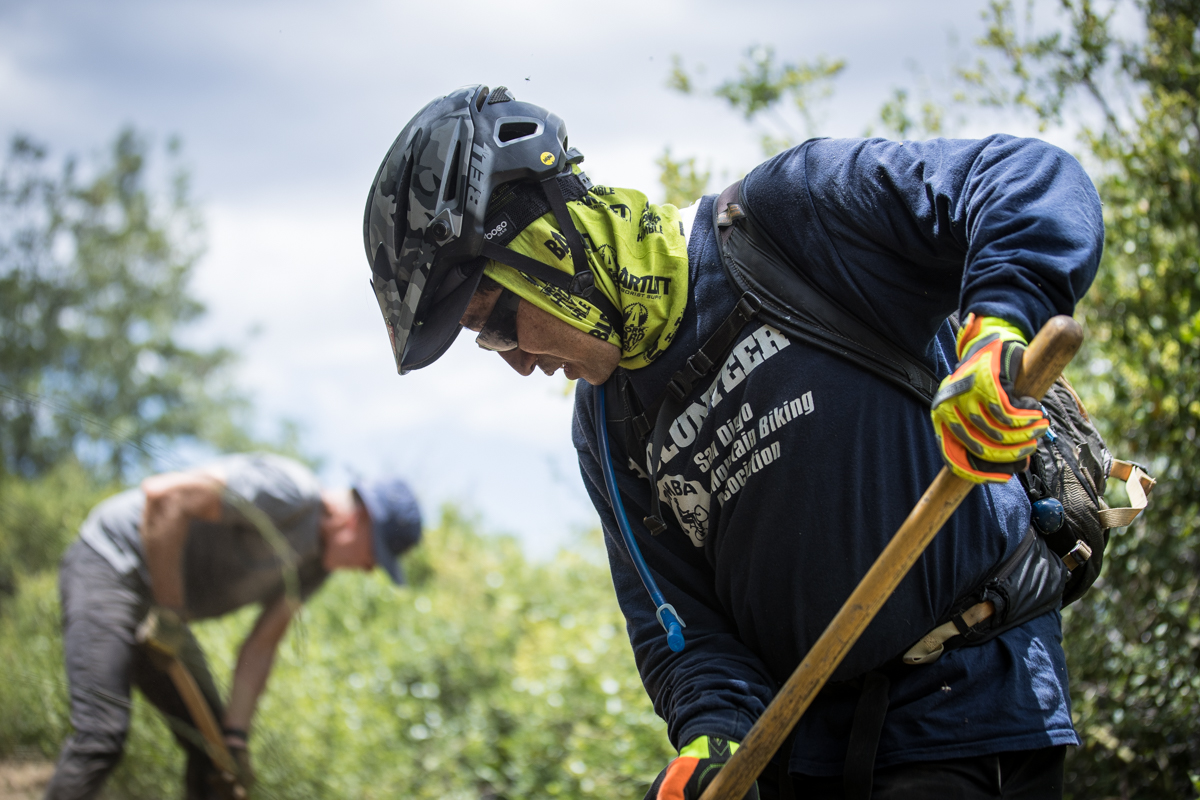
So in late June 2024, twelve land managers and eighteen trail stewards came together at the Red Roost Trailhead atop Mount Laguna, to collaborate on solutions to enhance their beloved trails. This four-day workshop, like many of the ones funded by the U.S. Forest Service Region 5 Challenge Cost Share Agreement, brought together a passionate group of people who care for, program, interface, and love their forest, each with a unique perspective.
Chris Orr, IMBA’s Community Engagement Specialist, led this group through a series of both intensive classroom and fieldwork instruction. “Chris is really good at understanding the audience that he's speaking to,” said Susie, “He has the ability to talk to some of these guys that have been doing trail work, either professionally or as a volunteer, for a very long time and working to come up with that common language.”
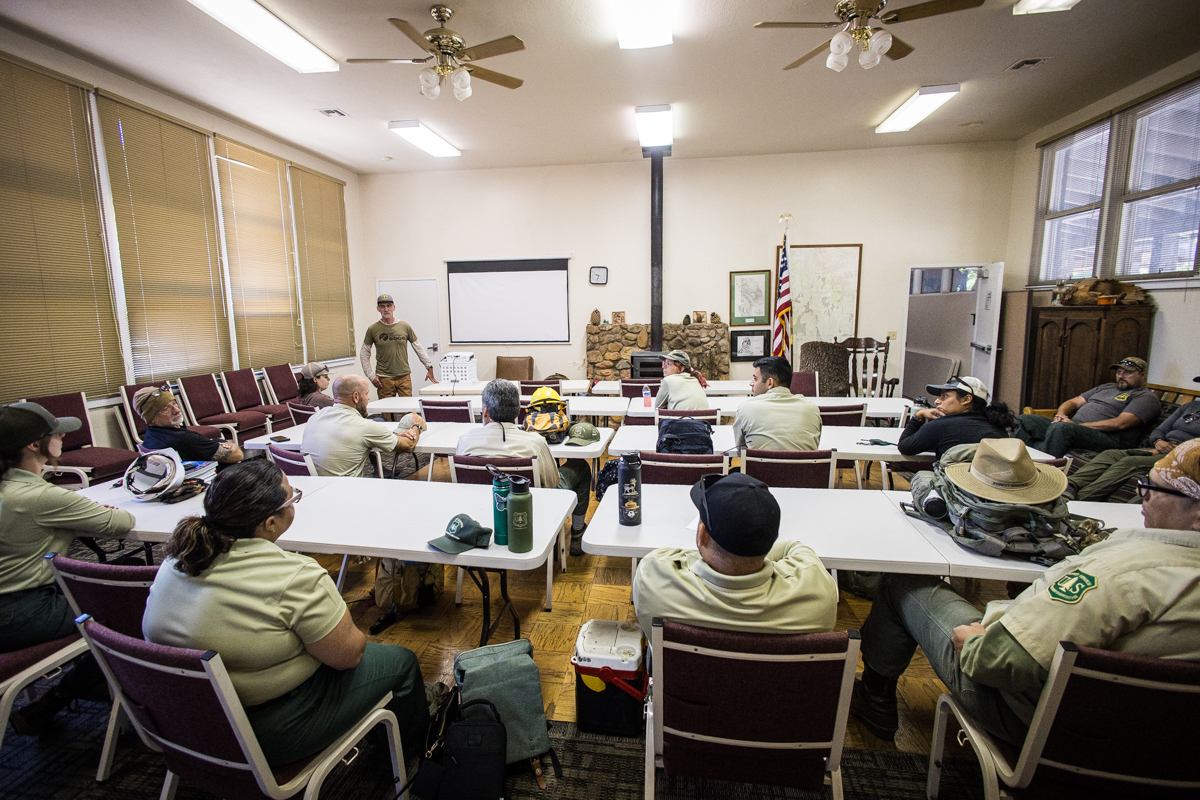
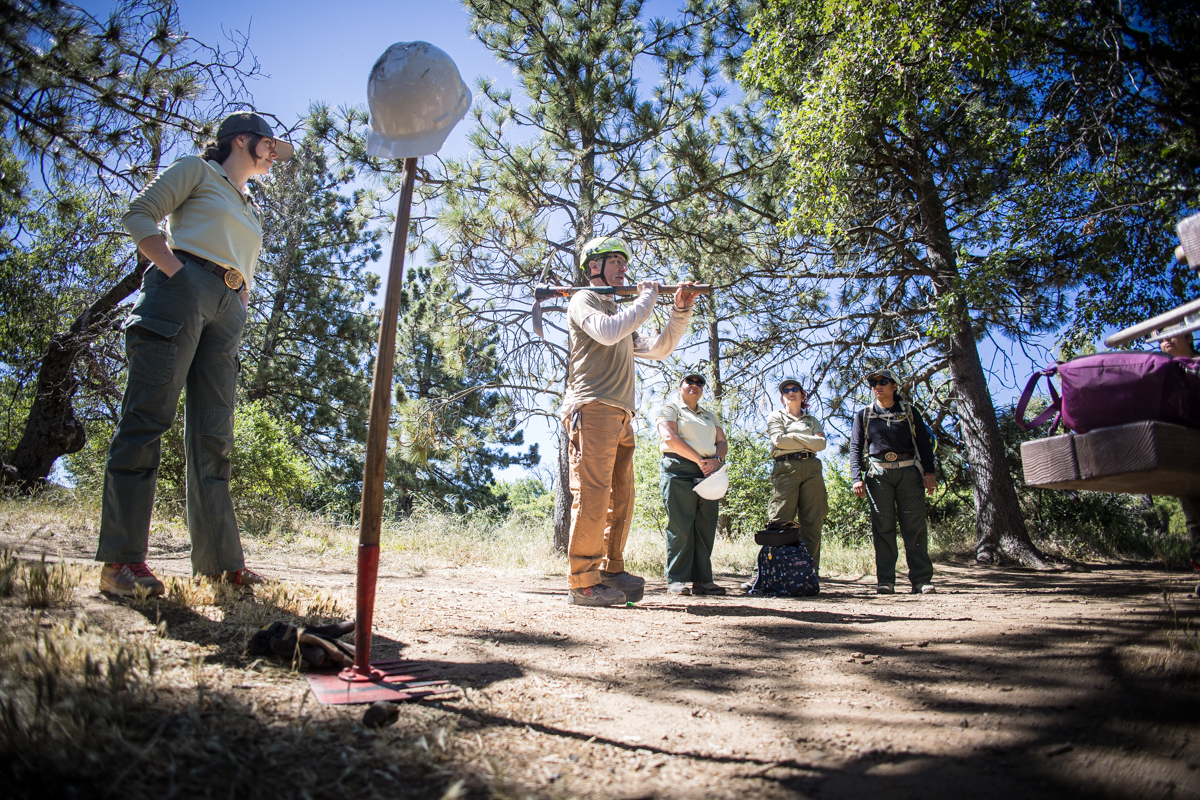
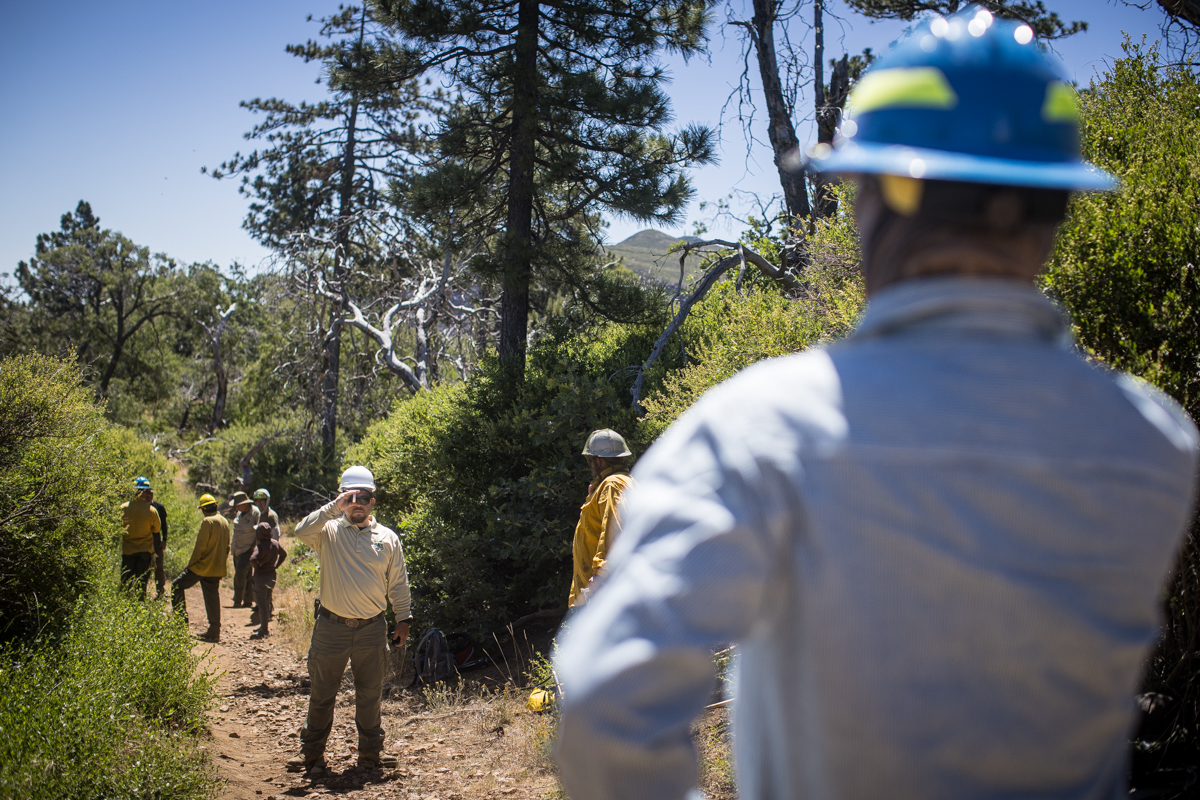
IMBA’s Trail Care/Trail Management workshops can be two-day or four-day, depending on the needs of the trails and community.
The first two days of the Cleveland National Forest school were focused on trail management or trail stewardship from the perspective of a land manager. IMBA staff adapt instruction methodologies so that the offerings are bespoke to the unique challenges of the area and the needs of the land manager overseeing the trails. The latter two days catered to stewards, volunteers, and staff of area nonprofits. These groups see the trails from the perspective of a trail user, and IMBA staff consider the opportunities that these users can embrace based on the feedback from the two previous days with land managers.
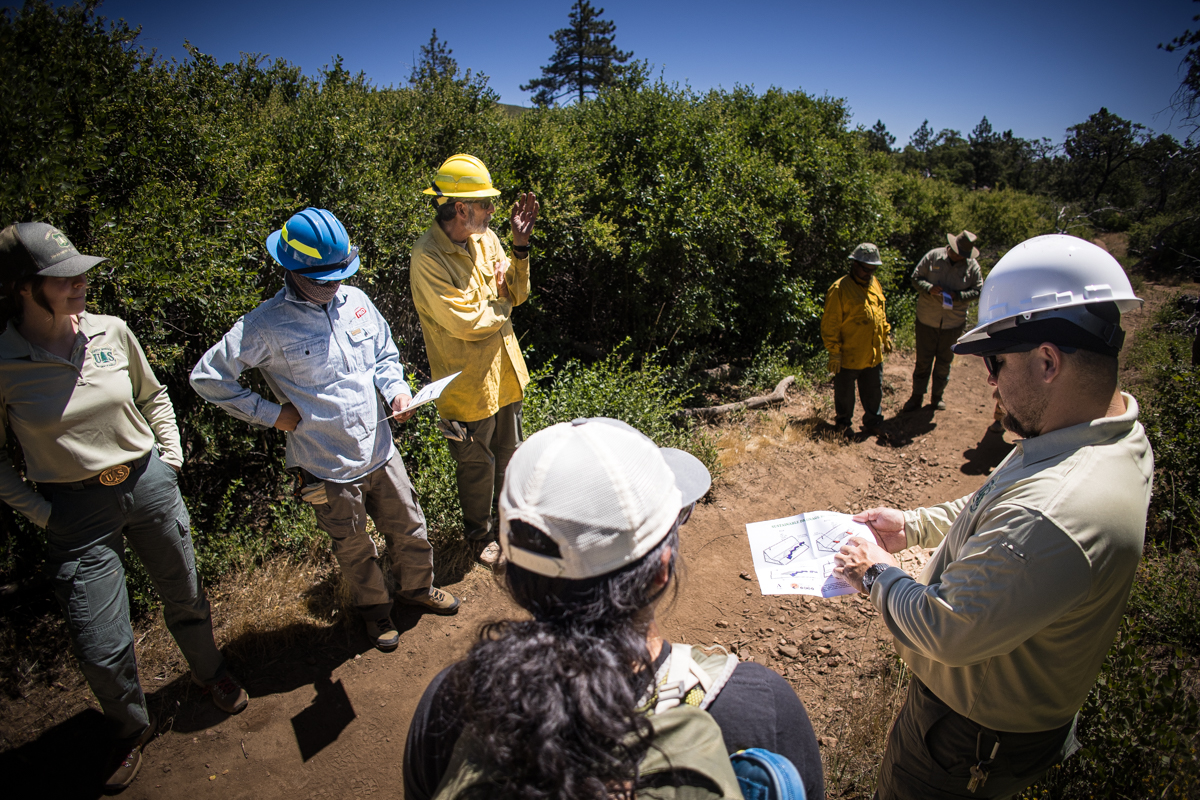
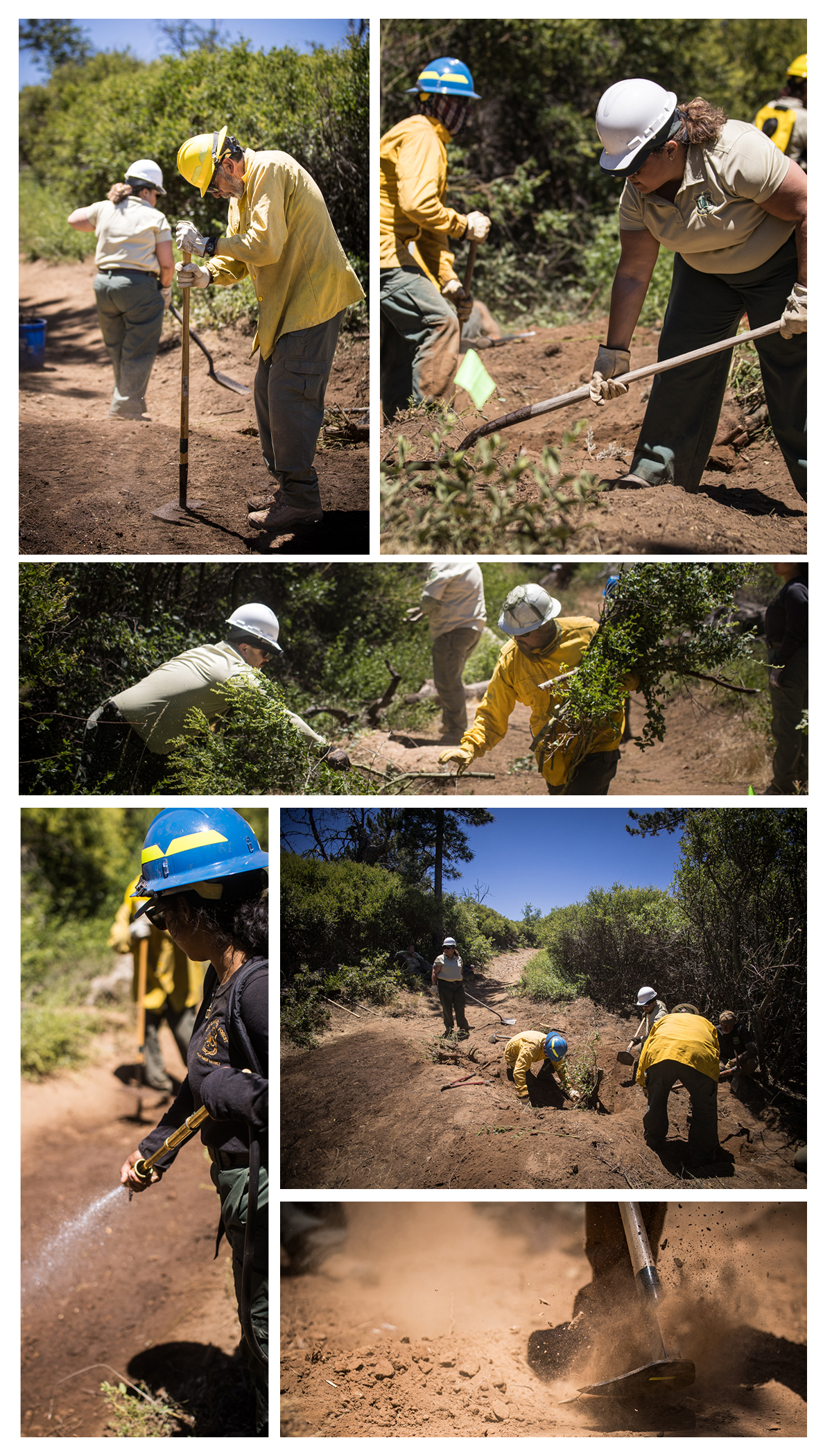
This building of a common foundation of knowledge for both land managers and volunteer trail stewards is imperative for the continued success of those relationships moving forward. “I've learned that being able to take a step back, listen and process and really understand what is needed in that situation is more beneficial than anything,” said Mia. Scott Hansen, the vice president for SDMBA, agrees. “Marrying the two groups together we have an opportunity to bridge some gaps and now we can come in as that force multiplier and create a bigger benefit and make their [the land managers] day-to-day job easier,” said Scott.
